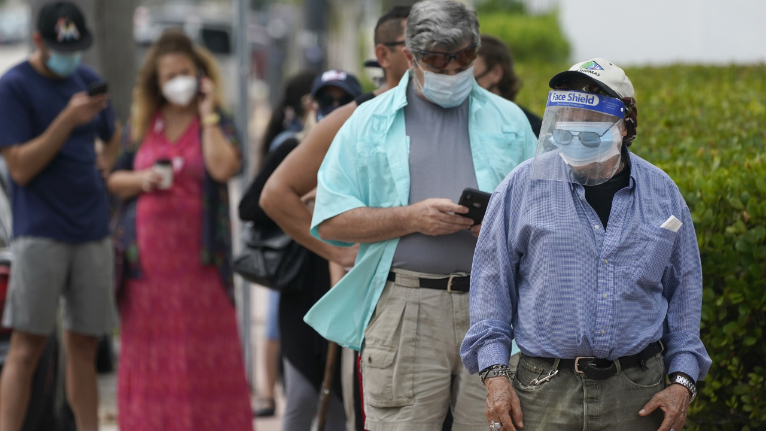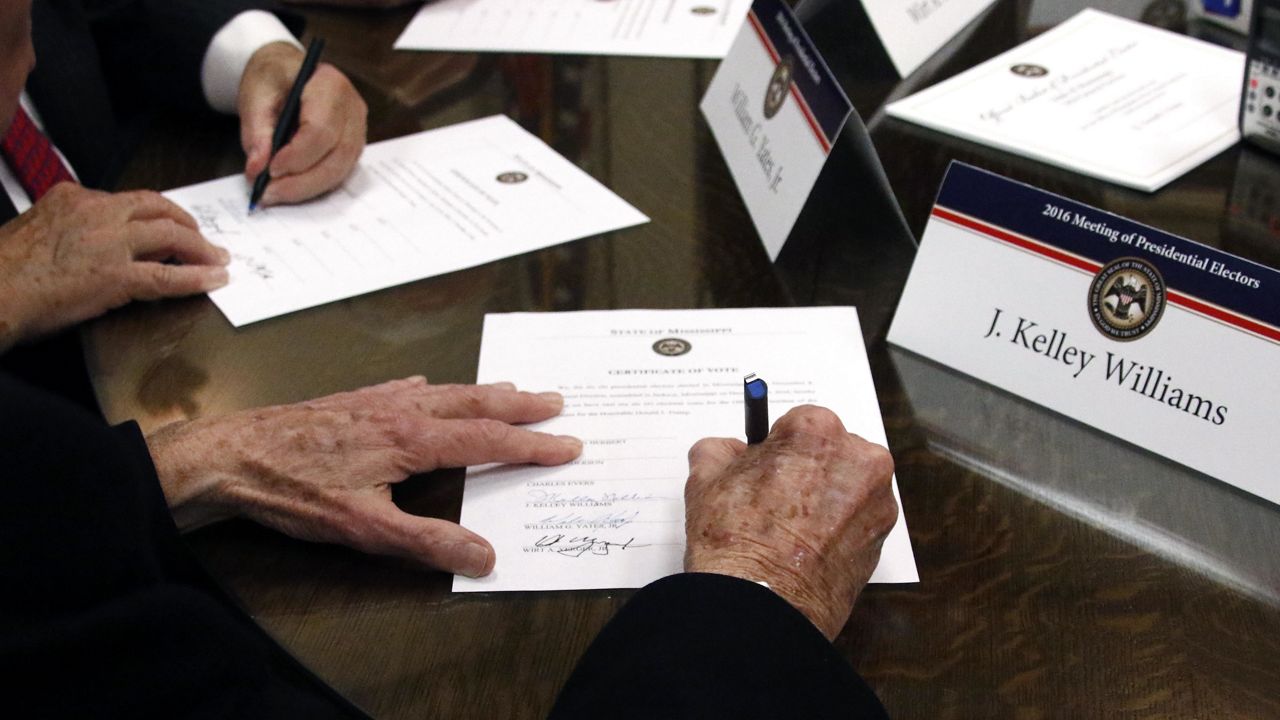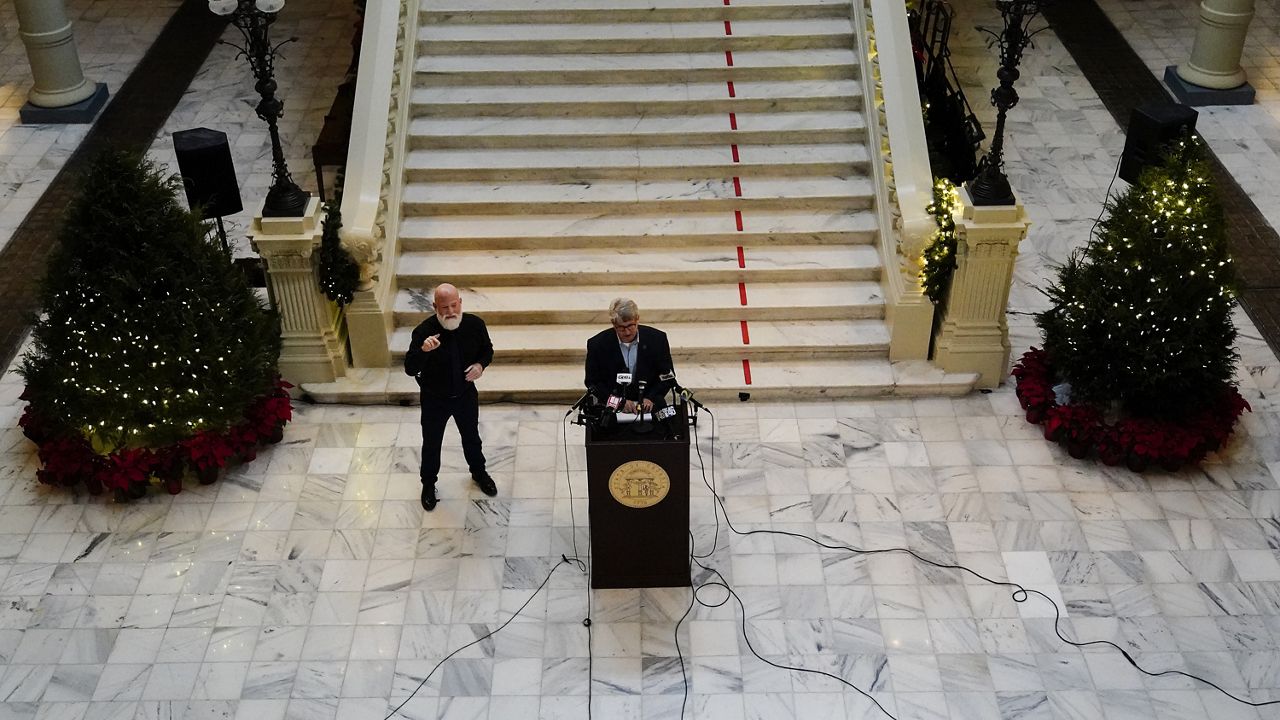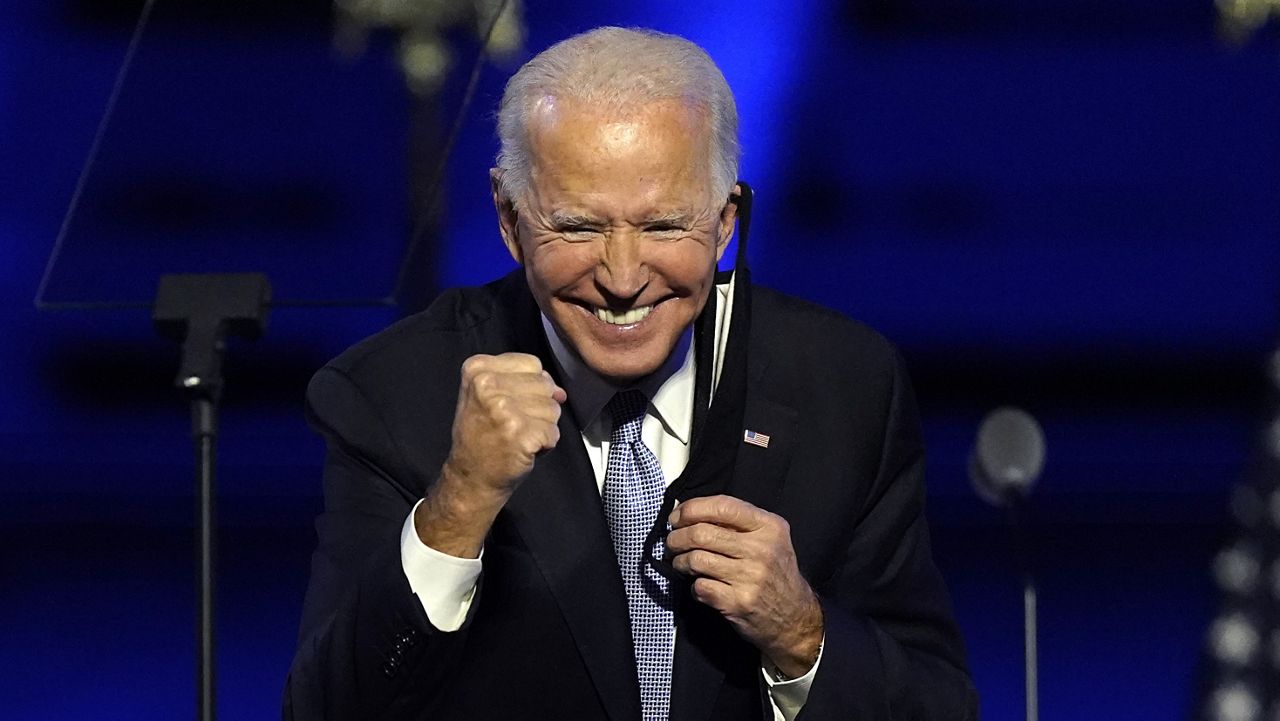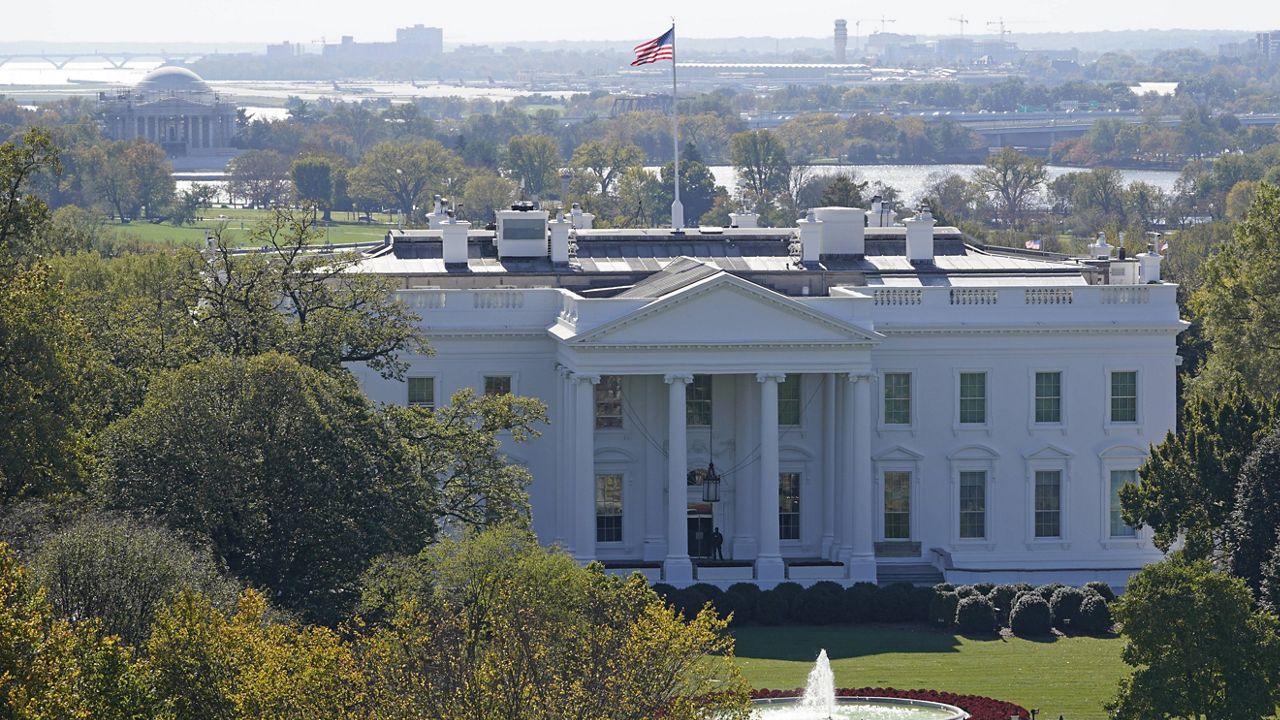NATIONWIDE — An unprecedented avalanche of early voting has transformed the 2020 election, possibly changing the way Americans vote forever.
At least 41.5 million voters have cast ballots in the 2020 election, according to Michael McDonald, an Associate Professor of Political Science at University of Florida who specializes in elections, and the U.S. Elections Project.
That eye-popping sum of early votes is driven both by Democratic enthusiasm and a pandemic that has transformed the way the nation votes.
Of note, over 29.5 million of those are mail-in ballots, and over 11.5 million are in-person votes, though the U.S. Elections Project notes that "some states do not differentiate between mail ballots and in-person votes."
The total represents at least 30% of all the votes cast in the 2016 presidential election, with less than two weeks to go until election day.
Texas leads the way with over 5.3 million ballots cast, followed by California with over 4.5 million, and Florida not far behind with over 3.6 million votes cast.
Other states that have crossed the 1 million voter mark: North Carolina (Over 2.1 million), Georgia (Nearly 2 million), New Jersey (Over 1.8 million), Michigan (Nearly 1.7 million), Virginia (Over 1.5 million), Ohio (Over 1.3 million), Illinois (Over 1.2 million), Pennsylvania (Over 1 million), and Massachusetts (Over 1 million).
For California, that accounts for nearly 31% of their ballots cast in 2016. For Florida, that accounts for over 38%.
For Texas, that's nearly 60%.
Vermont has also crossed the halfway mark in terms of their 2016 voter turnout, sitting at 51% with over 163,000 votes cast.
Several states are close to the 50% threshold, including Georgia, North Carolina, Montana, New Mexico, and New Jersey.
Americans’ rush to vote is leading election experts to predict that a record 150 million votes may be cast and turnout rates could be higher than in any presidential election since 1908.
“It’s crazy,” McDonald told the Associated Press. McDonald’s analysis shows roughly 10 times as many people have voted compared with this point in 2016.
“We can be certain this will be a high-turnout election,” McDonald said.
Long lines have been seen in early voting states across the country, but it doesn't seem to be deterring turnout. In fact, many voters said they were glad to see so many people voting early.
Jackie Burton and her son Lanair visited a polling site on the north side of Raleigh, North Carolina, late Monday morning. Although the line stretched for at least 75 yards out the door, they were able to get through in about 20 minutes. She said she didn't mind the wait.
“Many have died for this right for us to vote, and we by all means need to take advantage of it because every vote does count,” she says.
More than 900,000 North Carolinians visited the polls during the first four days of in-person early voting. That led to waits of an hour or more to cast a ballot in some parts of the state. Read more about early voting in the Tar Heel State here.
The same was true in Florida, where over 2.5 million ballots have been cast. In Orange County, Florida, lines at several of the polling places stretched around buildings and blocks and even out into the streets. Some people reported waiting for hours, even as it started raining.
Christa Ruvolo said it took her 2 hours 15 minutes to vote, but she was willing to wait as long as needed.
“I know there’s been a lot of stress on the Post Office with early mail-in ballots, so I wanted to be sure it was counted. I wanted to get a head start and give the Post Office a break," she said.
Scott Smith, who lives in downtown Orlando, said he has not missed an opportunity to vote in a presidential election.
“It's your right that you have, it's the only way you get your voice heard is to vote,” he said.
Evidence of long lines was also found in Seminole, Flagler and Brevard counties. Read more about early voting in Florida here.
Historically, in Texas, voter turnout has not been anything to brag about. The 2020 general election, however, is a whole new ballgame.
In Travis County, home of Austin and where 97% of eligible voters registered in time for the presidential election, 31,946 voted on Monday alone, and as of 10 a.m. Tuesday 7,000 people had already voted.
In Harris County, which is Texas’ most populous county and includes Houston and the surrounding area, more than 100,000 voters came to the polls for four straight days, which works out to an average of 9,000 votes per hour. Read more about early voting in the Lone Star State here.
In Wisconsin, More than 75,000 people in Wisconsin cast ballots on the first day of early in-person voting, according to the state elections commission.
The combined total of mail-in and early in-person votes cast in the state thus far amounts to 34% of the total votes cast in Wisconsin during the 2016 presidential election.
Voters waited in lines around the state on Tuesday for a chance to cast their ballots in person. Early in-person voting will be an option through Nov. 1 in the state. Because of potential delays with mail delivery, the state elections commission has recommended that mail-in ballots be sent no later than Oct. 27 to ensure they arrive in time.
The highest in-person turnout was seen in the state’s largest city, Milwaukee, where 4,025 people took advantage of the option. That was followed by Madison, with 1,821, and Eau Claire, where 1,283 voted early and in person.
The Elections Commission reported that 75,519 in-person absentee ballots were cast on Tuesday. As of Wednesday morning, that number had risen to 79,774. The total number of absentee ballots cast, both in-person and by mail, was 1,021,397 as of Wednesday.
Trump won by fewer than 23,000 votes in 2016, and the race looks to be a close one again.
In West Virginia, residents turned out in droves to cast their ballots on the first day of early in-person voting Wednesday, less than two weeks before the November election.
Long lines were reported in several polling places throughout the state.
Todd Dorcas of Cross Lanes waited for more than an hour to vote in his hometown in Kanawha County, the state’s largest county, which had the most early voting locations with eight.
The nation’s turbulent political climate had him chomping at the bit to vote.
“There definitely needs to be some change. We need some change,” Dorcas said. “We’re going in the wrong direction.”
In Charleston, the line at a downtown polling place office wrapped around a city block.
More than 91,000 voters had returned absentee ballots in West Virginia as of Tuesday, or 66% of the ballots requested. The deadline to request an absentee ballot is Oct. 28.
In addition, more than 1,000 voters have cast ballots using an electronic absentee method that is limited to active military and overseas voters as well as those with a qualifying disability.
Requests for absentee ballots have surpassed 2016 levels in Mississippi with two weeks left before Election Day.
The Clarion-Ledger reported Wednesday that the Statewide Election Management System reported that more than 120,200 absentee ballots had been requested as of Sunday compared to fewer than 111,000 four years ago. Almost 116,000 had been sent, also above the total for 2016.
Secretary of State Michael Watson said Monday about 89,500 completed ballots had been received at election offices. That compares to 103,000 ballots that were received in all four years ago.
Republicans have been bracing themselves for this early Democratic advantage for months, as they’ve watched President Donald Trump rail against mail-in ballots and raise unfounded worries about fraud. Polling, and now early voting, suggest the rhetoric has turned his party’s rank and file away from a method of voting that, traditionally, they dominated in the weeks before Election Day.
That gives Democrats a tactical advantage in the final stretch of the campaign. In many critical battleground states, Democrats have “banked” a chunk of their voters and can turn their time and money toward harder-to-find infrequent voters.
But it does not necessarily mean Democrats will lead in votes by the time ballots are counted. Both parties anticipate a swell of Republican votes on Election Day that could, in a matter of hours, dramatically shift the dynamic.
“The Republican numbers are going to pick up,” John Couvillon, a GOP pollster who is tracking early voting, told the AP. “The question is at what velocity, and when?”
Couvillon said Democrats can’t rest on their voting lead, but Republicans are themselves making a big gamble. A number of factors, from rising virus infections to the weather, can impact in-person turnout on Election Day. “If you’re putting all your faith into one day of voting, that’s really high risk,” Couvillon said.
That’s why, despite Trump’s rhetoric, his campaign and party are encouraging their own voters to cast ballots by mail or early and in-person. The campaign, which has been sending volunteers and staffers into the field for months despite the pandemic, touts that it has registered more voters this year than Democrats in key swing states like Florida and Pennsylvania — a sharp reversal from the usual pattern as a presidential election looms.
But it’s had limited success in selling absentee voting. In key swing states, Republicans remain far less interested in voting by mail.
In Pennsylvania, more than three-quarters of the more than 437,000 ballots sent through the mail so far have been from Democrats. In Florida, half of all ballots sent through the mail so far have been from Democrats and less than a third of them from Republicans. Even in Colorado, a state where every voter is mailed a ballot and Republicans usually dominate the first week of voting, only 19% of ballots returned have been from Republicans.
“This is all encouraging, but three weeks is a lifetime,” Democratic data strategist Tom Bonier said of the early vote numbers. “We may be midway through the first quarter and Democrats have put a couple of points on the board.”
The massive amount of voting has occurred without any of the violent skirmishes at polling places that some activists and law enforcement officials feared. It has featured high-profile errors — 100,000 faulty mail ballots sent out in New York, 50,000 in Columbus, Ohio, and a vendor supplying that state and Pennsylvania blaming delays on sending ballots on overwhelming demand. But there’s little evidence of the mass disruption that some feared as election offices had to abruptly shift to deal with the influx of early voting.
But there have been extraordinary lines and hours-long wait times in Georgia, Texas and North Carolina as they’ve opened in-person early voting. The delays were largely a result of insufficient resources to handle the surge, something advocates contend is a form of voter suppression.
Republicans argue that these signs of enthusiasm are meaningless — Democratic early voters are people who would have voted anyway, they say. But an AP analysis of the early vote shows 8% of early voters had never cast a ballot before, and 13.8% had voted in half or fewer of previous elections for which they were eligible.
The data also show voters embracing mail voting, which health officials say is the safest way to avoid coronavirus infection while voting. Of the early voters, 82% cast ballots through the mail and 18% in person. Black voters cast 10% of the ballots cast, about the same as their share of the national electorate, according to the AP analysis of data from L2, a political data firm. That’s a sign that those voters, who have been less likely to vote by mail than white people and Latinos, have warmed to the method.
Mail ballots so far have skewed toward older voters, with half coming from voters over age 64. Traditionally, younger and minority voters send their mail ballots in closer to Election Day or vote in person.
The mail ballots already returned in several states dwarf the entire total in prior elections. In Wisconsin, more than five times as many mail ballots have been cast compared with the entire number in 2016. North Carolina has seen nearly triple the number so far.
In-person early voting began this week in several major states and also broke records, particularly in crowded, Democratic-leaning metropolitan areas. In Texas, Houston’s Harris County saw a record 125,000 ballots cast. In Georgia, hours-long lines threaded from election offices through much of the state’s urban areas.
Tunde Ezekiel, a 39-year-old lawyer and Democrat who voted early in Atlanta on Thursday, said he wanted to be certain he had a chance to oust Trump from office: “I don’t know what things are going to look like on Election Day. ... And I didn’t want to take any chances.”
The obvious enthusiasm among Democrats has cheered party operatives, but they note that it’s hard to tell which way turnout will eventually fall. Republicans may be just as motivated, but saving themselves for Election Day.
“High turnout can benefit either side,” Bonier said. “It just depends.”
The Associated Press contributed to this report.





